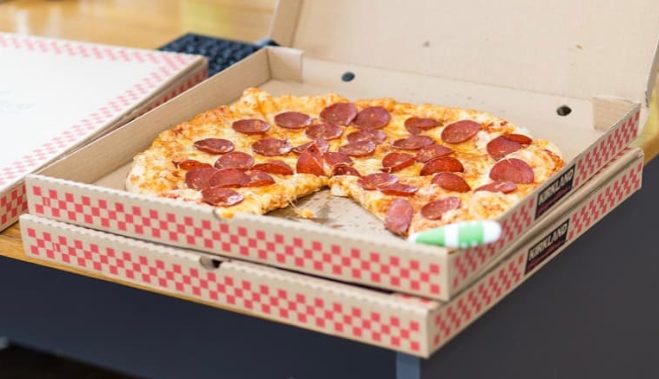Why You Should Think Twice Before Putting a Pizza Box in the Oven?
In the world of quick and easy meals, pizza reigns supreme. Whether it’s a late-night snack or a dinner party staple, pizza offers convenience and satisfaction unmatched by most other foods. However, when it comes to reheating or keeping your pizza warm, you might have heard of or considered the method to put a pizza box in the oven. While it seems like a straightforward and clever hack, this practice comes with significant risks and drawbacks that merit a closer look. In this article, we’ll explore why reconsidering this method is essential for your safety, the quality of your pizza, and the longevity of your oven.
Safety Concerns with Cardboard in the Oven
Risk of Fire
One of the most alarming risks associated with placing a pizza box in the oven is the potential for fire. Cardboard is a combustible material, and exposing it to high temperatures can lead to ignition. Most ovens can easily exceed the combustion point of cardboard, posing a severe fire hazard that could endanger your home and loved ones.
Release of Toxic Chemicals
Cardboard boxes are often treated with chemicals to enhance their strength and durability. When heated, these chemicals can release toxic fumes that might contaminate your food and the air quality in your home. Inhaling these fumes or ingesting them through food can pose health risks over time.
Damage to the Oven
The practice of putting a pizza box in the oven can also lead to damage to the appliance itself. Cardboard can leave behind residue and potentially cause electrical issues if it comes into contact with the oven’s heating elements. Maintaining a clean and functional oven is crucial for its longevity and performance.
Impact on Pizza Quality
Uneven Heating
A pizza box is designed to retain heat, not to facilitate the even reheating of its contents. When placed in the oven, the cardboard can prevent heat from circulating evenly, resulting in a pizza that’s hot in some spots and cold in others. This uneven heating can ruin the texture and taste of your pizza.
Soggy Crust
Cardboard absorbs moisture, and as the heat in the oven increases, the moisture trapped in the box can make the pizza crust soggy. A crisp crust is a hallmark of a good pizza, and the steam from the cardboard can significantly diminish the quality of your meal.
Loss of Flavor
Reheating pizza in its box can also lead to a loss of flavor. The trapped steam not only affects the texture of the pizza but can also dilute its flavors, making your once delicious pizza taste bland and unappetizing.
Alternatives to Reheating Pizza
Use a Pizza Stone or Baking Sheet
For those looking to preserve the quality of their pizza while reheating, using a pizza stone or a baking sheet is a much safer and more effective option. These tools allow for even heat distribution, ensuring that your pizza retains its flavor and texture.
Skillet Reheating Method
Reheating pizza in a skillet on the stovetop is another excellent alternative. This method allows the crust to become crispy while the cheese melts perfectly on top. Just cover the skillet to trap the heat and steam for a few minutes, and you’ll have a pizza that tastes as good as fresh.
Toaster Oven or Air Fryer
For individual slices, a toaster oven or an air fryer can offer quick and efficient reheating. These appliances are ideal for achieving a crispy crust and melted cheese without the risks associated with using a conventional oven and a pizza box.
Microwave with a Cup of Water
If you’re in a hurry, reheating pizza in the microwave alongside a cup of water can help prevent the crust from becoming too chewy. The water creates steam that helps keep the crust from drying out too much, though this method may not yield as crispy a result as others.
Conclusion
While the idea to put a pizza box in the oven may seem convenient, the potential risks and negative impacts on food quality make it a practice best avoided. Safety concerns, alongside the desire to enjoy pizza at its best, should guide your reheating methods. By opting for safer, more effective alternatives, you can ensure that your pizza remains delicious and your home safe from unnecessary hazards. Whether you choose to use a pizza stone, skillet, toaster oven, or even the microwave, these methods will help you enjoy your pizza just the way you like it, without compromise.




